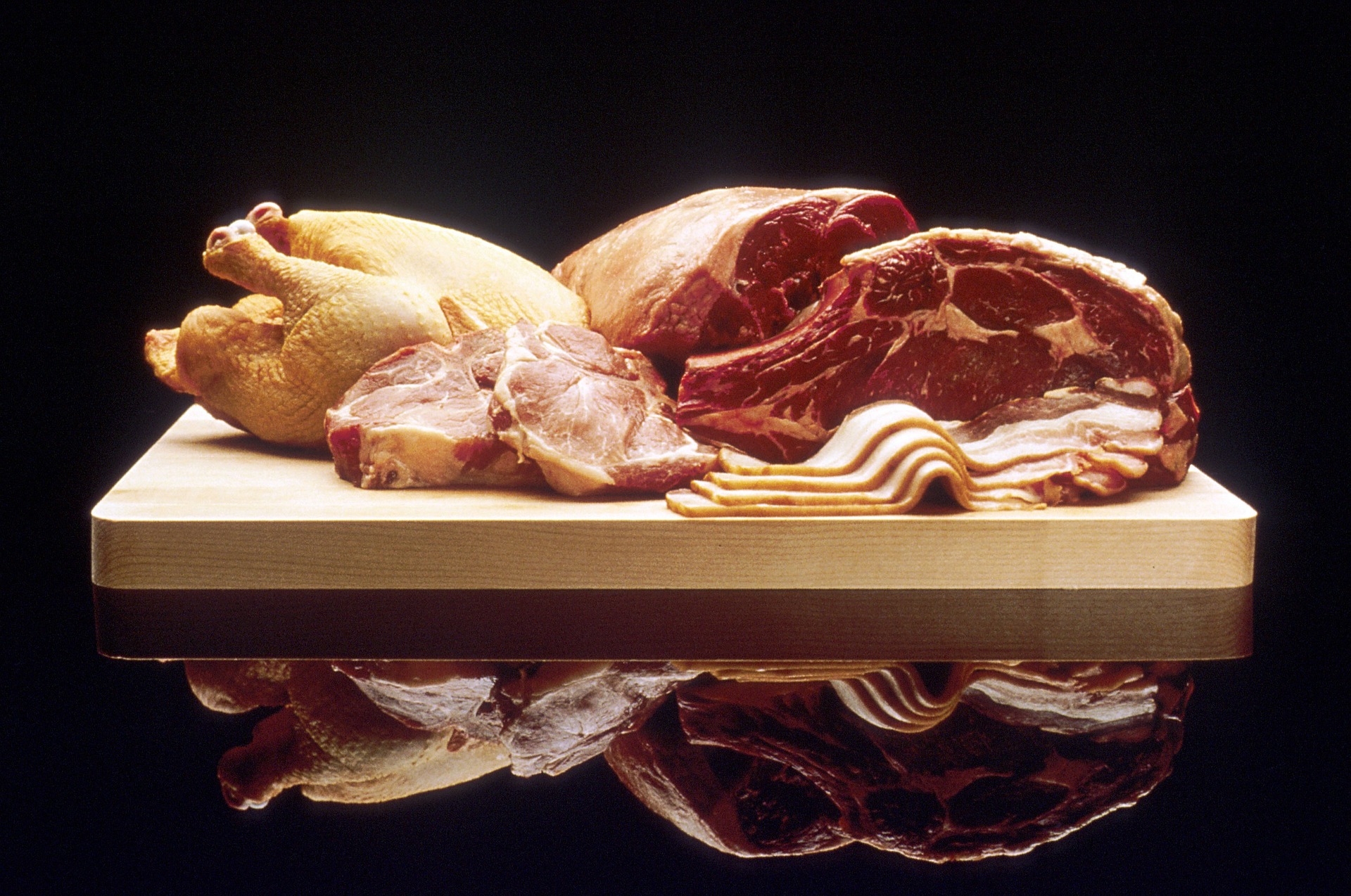
5 Tips for Buying Quality Meat for a Delicious Meal
Buying quality meat can help you make a delicious and healthy meal. Fresh and quality meat adds flavor and distinction to any meal, from a fancy dinner to a simple sandwich. But it can be hard to determine which type of meat is of higher quality. Here are 5 tips to help you purchase quality meat:
1. It's important to look for minimal fat content. Quality meat should be lean and have no more than 10% fat. Look for cuts that are bright pink in color. This indicates that it is fresh and has not been exposed to air for too long.
2. Check the packaging. Quality meat will usually have a USDA grade label. This label is usually found on the upper front part of the package and indicates the quality of the product. It will also have a sell-by date, so make sure that date has not passed. Additionally, the package should be sealed and have no tears or holes.
3. Smell is an important factor as well. Quality meat should have a mild, almost sweet aroma. If it has a distinct ammonia smell, it is most likely bad. Additionally, the meat should have a firm texture and should not easily break apart.
4. Another thing to look out for is the color of the fat. Quality meat will have a bright white fat. If the fat is yellow or greyish, it is likely that the meat has been sitting too long or is old.
5. Quality meat should also be purchased from a trustworthy source. Buying from a local butcher shop may be more expensive than buying from a major supermarket chain, but it is likely a better choice. Local butchers generally have higher quality meat, and they will be able to answer questions regarding the meat.
1. Look For Butcher Shops
Butcher shops are your best bet when it comes to buying quality meat. Unlike supermarkets, they typically get their meat from local farmers, so you know that you’re getting the freshest and most sustainable product possible. They also employ expert butchers who know the importance of treating meat with the care and respect it deserves.
To ensure your meat is in the best possible condition, most butchers age the meat by storing it in a cool environment. This process helps to tenderize the beef and lock in its flavor. Many butchers also offer custom cut and butchering services, so if you have an idea of what sort of cut you would like, they can usually accommodate.
Once the meat is ready to be served, butchers still take extra steps to ensure quality. They can tell you which parts of the meat are best for certain recipes and techniques. They’ll also be familiar with how to best trim the fat to give you the most flavorful results.
Buying from a butcher isn’t just about getting a better quality of meat. You get the added benefit of learning from experienced hands. Butchers love to share their knowledge, whether it’s about how to cook a certain cut or which seasonings taste best with a particular type of meat.
For those who want to take things to the next level, there are even specialty butchers who source even more exotic and premium meats. Whether you’re looking for wild game, pastured poultry, or grass-fed beef, these butchers have access to the best cuts and can provide guidance on how to prepare them.
2. Check For Quality Grading
The United States Department of Agriculture (USDA) has a system for grading meat. This grading system can help you determine the quality and age of the meat. Higher grades indicate better quality and fresher meat. Therefore, when you go shopping, make sure that you look for meats with a high grade.
The USDA has five grade categories for meat: prime, choice, select, standard, and commercial. Prime is the highest grade and indicates the best quality and freshest meat. Choice grade meat is also high-quality and a good choice. Select grade is of good quality, but not as high as choice or prime grade. Standard grade is of lower quality and is usually found in low-priced products. Lastly, commercial grade is the lowest grade available and is typically used in processed meats and food service products.
Knowing the USDA's meat grading system can help you make smart decisions about which meats to purchase for yourself and your family. If you want the best quality, look for prime and choice grade meats. If you're on a budget, select grade is an affordable option. Lastly, if you're making processed foods or using meat for commercial purposes, you can use standard or commercial grade meat.
When you're shopping for meat, look for the grade label—it can usually be found near the price tag. This way, you can make sure you're buying the right quality meat for your needs. The USDA's meat grading system is an excellent way to ensure you're getting the best quality, freshest meat available.
3. Select The Right Cut
Different cuts of meat have different purposes. For example, a ribeye steak is great for grilling, while a sirloin steak is great for pan-frying. Knowing the right cut for the right occasion can help you choose the right quality meat.
It is important to know the features of each cut of meat to know how to prepare it. A ribeye steak is marbled with fat and has a characteristic flavor. The fat along with its tenderness makes it an ideal choice for grilling. On the other hand, a sirloin steak is leaner and denser and is great for pan-frying. It also has a great flavor, but it is slightly less tender than the ribeye.
When purchasing a cut of meat, make sure you buy the best quality you can find. Look for meat that has a bright color and a firm texture. If you are buying pre-packaged meats, check the sell-by date and avoid anything that has a strong odor. The USDA has a beef grading system that is a good guide to help you determine the quality of the meat you are buying.
Preparing a steak correctly is also important to ensure a good result. Make sure to trim any excess fat or sinews before cooking and season the steak well. Depending on the cut of meat, it should be cooked over a high heat for a short period of time or a lower heat for a longer period. Pay attention to the internal temperature of the steak and make sure it reaches the desired doneness before serving.
Knowing the right cut of meat for the right occasion, as well as the tips to ensure a great outcome, can make all the difference. Quality and preparation are key factors to make sure you get the most flavor out of each cut of meat.
4. Smell The Meat
Fresh and quality meat shouldn’t smell bad. If you’re at the butcher shop or supermarket, pick up the packages of meat and give them a sniff. If the smell is off or unpleasant, then that’s a sign that the meat may not be of the best quality.
In general, fresh and quality meat should also feel fresh. If the meat feels slimy or sticky, it has been exposed to too much moisture. This can be a sign that the meat has been sitting out too long or not kept in a proper atmosphere. The color of the meat is also indicative of its freshness. Bright, red meat is a sign of quality, while gray and dull-looking meat is an indication that the meat has been left out too long. Lastly, if the meat feels unusually tough or has an odd texture, it is likely not the freshest.
Once you’ve determined if the meat is of good quality, you can then properly cook and enjoy it. Be sure to adhere to the USDA’s guidelines for safely handling and cooking meat. This will help you avoid any bacteria or contamination and ensure that your meal is safe and enjoyable. If you are unsure about how to properly cook the meat or don’t have the right equipment, find a good butcher. They will be able to show you how to cook the meat correctly and help you pick out the right cuts.
5. Check The Price
Quality meat can be expensive. However, there are certain cuts of meat that are more affordable and still of high quality. Knowing the market prices of these cuts can help you get the most bang for your buck.
There are a few cuts of meat that are affordable, yet still of quality. Chuck roast and stew meat are two cuts that can be found for a lower price and still provide a great taste when cooked. These cuts are best for slow-cooking methods such as roasting, braising, and simmering.
Other cuts of meat that are affordable are flank steak, pork shoulder, and chicken thighs. All of these cuts are known for their juiciness, affordability, and flavour. Flank steak is best when marinated and grilled, pork shoulder is perfect for slow-cooking, and chicken thighs are ideal for baking, frying, or grilling.
Another way to save money when purchasing quality meat is to buy in bulk. Buying a whole chicken or a large cut of beef can be cheaper in the long run. This can often be done through a local butcher or at a farmer's market.
By knowing the market prices of quality cuts of meat, you can get the most bang for your buck and still enjoy a delicious meal. With the right knowledge and techniques, you can enjoy quality meat at an affordable price.
By following these tips, you will be sure to buy quality meat and create the most delicious and healthy meals. So next time you’re at the butcher shop or supermarket, don’t forget these top tips for selecting quality meat!
To start, look at how the meat is packaged. Quality cuts of meat are vacuum sealed, which ensures the meat is protected from bacteria and retains its freshness. If you notice any tears in the packaging, that’s a red flag that the meat is not fresh and should be avoided. Additionally, check the color of the meat. Fresh meat should have a reddish hue, while spoiled meat may have a grey tint. Also, think about the smell. Quality meat will carry a light scent, while off-smelling meat should be avoided.
When perusing the grocery store shelves, you should also pay attention to the label. An ideal label should contain information about the cut, the source of the animal, and the date the meat was packaged. If the label is blank or the information is not legible, the meat is not fresh and should not be purchased. Another thing to note is the overall texture of the meat. It should be firm and not too soft.
Most importantly, make sure the butcher or store you purchase your meat from is reputable and adheres to best practices. If the store looks unhygienic, go somewhere else. Quality meat is a key component of delicious and healthy meals, so take the time to make sure you’re buying from a trustworthy source. Don’t forget, the peace of mind that comes with knowing you’re getting the best quality is worth the extra effort.
